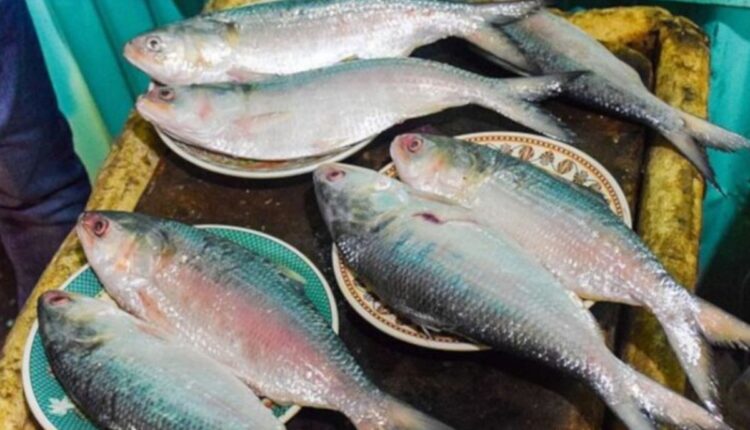The world population is increasing rapidly. Along with this, it is becoming very difficult to provide good food to the people. For this, aquaculture has become a good food option. Through aquatic farming, we can provide cheap and nutritious food to the people, which contains a lot of protein. But as aquaculture is growing, some of its problems are also coming to the fore. Artificial food, chemicals and medicines are being given to the fish, which is increasing the cost. Also, due to small germs, the fish become sick, due to which the fish farmers also have to suffer losses.
This problem is like someone not getting good food and becoming weak. Therefore, when it comes to fish diet, Moringa is a great option. The use of Moringa in fish farming diet can help keep the fish healthy and run the aquaculture work well. In this blog, we will know what is the use of Moringa in fish diet and how it can be a better option for fish food.
What is Moringa?
Moringa is a tree which is also called Drumstick and Drumstick. It is very good for fish as well as human health. Every part of it is useful – fruits, flowers, leaves, even bark. People eat it and also make medicines from it. Moringa has a lot of nutrients, such as vitamin C, calcium, iron and fiber. Oil is also extracted from its seeds.
Moringa is a Superfood for Fish
The use of Moringa in fish farming diet is a kind of superfood for fish. It gives the fish the strength to fight diseases. Moringa leaves contain all the nutrients that are necessary to keep fish healthy. It contains ten types of essential amino acids, which help in making protein. Also, it contains many types of vitamins.
Therefore, if we feed Moringa to fish, they will be healthier and stronger. It is better than artificial food because it is natural and does not contain any harmful chemicals. The use of Moringa in fish farming diet will keep the fish healthy and the fish farmers will also benefit.
Fish get protein from Moringa
Protein is very important for the growth and reproduction of fish. Research has shown that fish fry require at least 30% protein. Usually, fish farmers use fish meal as a source of protein. But, with the increasing demand for fish meal, there is also increasing pressure on natural resources for its production.
In such a situation, the use of alternative protein sources like the use of Moringa in fish diet is increasing in aquatic farming. Moringa is very high in protein, as well as all the essential amino acids are present. Therefore, Moringa is a good option for fish diet. Moringa leaf powder provides 25-37% protein. It helps in the growth of fish and also increases their disease resistance.
Benefits of Moringa in Fisheries
(Add image here as per hindi article)
Use of Moringa in fish farming diet The leaves, seeds and bark of the plant contain many phytochemicals, such as flavonoids, phenolic acids and anthraquinones. These elements help in improving the health of fish, increasing immunity and increasing the shine of the skin. Not only this, the use of Moringa is a cheap and effective alternative to traditional antibiotics and chemical medicines. It helps in the growth of fish, skin color and fighting diseases, without any harmful effects.
Moringa is Important for Ornamental Fish
Many researches have shown that the use of Moringa in fish farming diet is very beneficial for ornamental fish like tilapia, seabream, giblet carp and guppy. Because in these studies it was seen that if 10 to 15% Moringa is added to the fish diet, then there is no bad effect on the growth of the fish. That is, Moringa can be considered a better alternative to protein instead of fish meal.
A special element is found in Moringa, which is called benzyl isothiocyanate. It has antibiotic properties, which help fish to grow and die less. Not only this, the carotenoids of Moringa also help in darkening the color of the skin of fish. For example, adding Moringa to the food of tilapia fish increases its immunity and also improves its health. Some compounds present in Moringa, such as Isothiocyanate and Glycosides, greatly increase the immunity and health of the fish.
How is Moringa Cultivated?
For the cultivation of Moringa, you can sow the seeds directly in the pits or you can prepare its saplings in the nursery first. To prepare the saplings, put the seeds in a polythene bag at a depth of 1-2 cm and put 2-3 seeds in each bag. The seeds germinate in 5-10 days. When the saplings become 60-90 cm tall, they can be transplanted in the field. Before sowing, the field is prepared well and pits are made and cow dung manure or compost is put in them.
Transplantation of Moringa plants can be done from June to September. Harvesting of plants is also necessary for their good growth. When the plants are about 75 cm, its upper part should be broken so that new branches can come out from the side. The plants are planted in pits of 45 X 45 X 45 cm size at a distance of 2.5 X 2.5 meters.
In this way, you can use Moringa in fish feed as fish meal. It would not be wrong to say that it is an excellent option. It contains a good amount of protein and is also very beneficial for the health and growth of fish. Therefore, the use of Moringa in fish feed gives a sustainable and healthy solution for aquatic farming.
Frequently Asked Questions on Using Moringa in Fish Diet
Question 1: Is Moringa used only in fish farming?
Answer: No, Moringa is not only used in fish farming but it is also used for human diet, health benefits, and medicinal purposes. Its leaves, seeds, and bark provide different health benefits.
Question 2: How to prepare Moringa leaf powder for fish?
Answer: Wash and dry the Moringa leaves thoroughly and then grind them to make a powder. This powder can be added to the fish diet, so that the fish can get more nutrients.
Question 3: Does the use of Moringa change the color of the skin of fish?
Answer: Yes, Moringa contains carotenoids that can darken the skin color of fish. This can be especially beneficial for ornamental fish.
Question 4: In which type of soil can Moringa be cultivated?
Answer: Moringa can be grown in any type of soil, even if it is barren or less fertile. But, the pH value of the soil should be between 6.3 to 7.
Question 5: How much protein do fish get from Moringa?
Answer: Moringa leaves powder provides 25-37% protein to fish. This helps in the growth of fish and also increases their immunity.
Question 6: Which is the best season for Moringa cultivation?
Answer: Warm climate is most suitable for Moringa cultivation. The best season is from June to September, when the temperature remains between 25 to 30 degrees Celsius.
Question 7: In how many days are Moringa pods ready?
Answer: Moringa pods are usually ready in 160-170 days. Pods appear twice a year and can be harvested four times, at different stages as per the need.
Q8: How should Moringa be irrigated?
Answer: Moringa requires phosphorus for its roots and nitrogen for its leaf growth. Plants do not require much water, so drip or sprinkler irrigation method can be used. Also, weeding is necessary at an interval of 30 days so that weeds do not affect the growth of the plants.
Q9: What are the benefits of using Moringa in fish farming?
Answer: Using Moringa in fish farming diet provides natural protein to the fish, which improves their growth and development. It also increases the immunity of fish and improves their skin quality. Additionally, Moringa can reduce the use of artificial feed and chemicals.
Q10: What percentage of Moringa should be added to fish farming diet?
Answer: For ornamental fish, Moringa should be added to the fish diet in the amount of 10 to 15%. This does not have any negative effect on the growth of the fish and proves to be a good protein option.
Contact us- If farmers want to share any valuable information or experiences related to farming, they can connect with us via phone or whatsApp at 9599273766 or you can write to us at [email protected]. Through Kisan of India, we will convey your message to the people, because we believe that if the farmers are advanced then the country is happy.
You can connect with Kisan of India on Facebook, Twitter, and WhatsApp and Subscribe to our YouTube channel.



